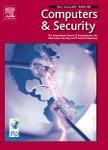版权所有:内蒙古大学图书馆 技术提供:维普资讯• 智图
内蒙古自治区呼和浩特市赛罕区大学西街235号 邮编: 010021

作者机构:Ben Gurion Univ Negev Dept Software & Informat Syst Engn Beer Sheva Israel
出 版 物:《COMPUTERS & SECURITY》 (计算机与安全)
年 卷 期:2021年第106卷
页 面:102276-102276页
核心收录:
学科分类:08[工学] 0812[工学-计算机科学与技术(可授工学、理学学位)]
基 金:European Union
主 题:Stream clustering Autoencoder Dimensionality reduction Anomaly detection Activity recognition
摘 要:The increasing number of IoT devices in smart environments, such as homes, offices, and cities, produce seemingly endless data streams and drive many daily decisions. Conse-quently, there is growing interest in identifying contextual information from sensor data to facilitate the performance of various tasks, e.g., traffic management, cyber attack detection, and healthcare monitoring. The correct identification of contexts in data streams is help-ful for many tasks, for example, it can assist in providing high-quality recommendations to end users and in reporting anomalous behavior based on the detection of unusual con -texts. This paper presents DeepStream, a novel data stream temporal clustering algorithm that dynamically detects sequential and overlapping clusters. DeepStream is tuned to clas-sify contextual information in real time and is capable of coping with a high-dimensional feature space. DeepStream utilizes stacked autoencoders to reduce the dimensionality of unbounded data streams and for cluster representation. This method detects contextual behavior and captures nonlinear relations of the input data, giving it an advantage over existing methods that rely on PCA. We evaluated DeepStream empirically using four sen-sor and IoT datasets and compared it to five state-of-the-art stream clustering algorithms. Our evaluation shows that DeepStream outperforms all of these algorithms. Our evaluation also demonstrates how DeepStream s improved clustering performance results in improved detection of anomalous data. (c) 2021 Elsevier Ltd. All rights reserved.